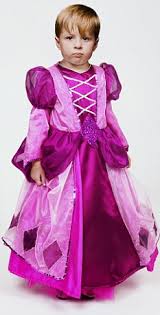Lesson 1: Clinical Disorders – Part E
PART E
Gender Dysphoria
In the DSM-5, people whose gender at birth is contrary to the one they identify with are diagnosed with gender dysphoria instead of the old term "gender identity disorder". As they mature, many people have occasional thoughts about the advantages of being the opposite  gender. A little girl may say she wishes she were a boy so she could go topless at the community swimming center like her brother. A little boy may say he wishes he were a girl so he could play with his sister’s dolls. As most people mature, however, they are content to be the gender they are. Unlike the majority of people, individuals with gender dysphoria are discontent with their gender. They feel they really are the other gender – despite what their reproductive organs indicate. They feel trapped in the body of the wrong gender.
gender. A little girl may say she wishes she were a boy so she could go topless at the community swimming center like her brother. A little boy may say he wishes he were a girl so he could play with his sister’s dolls. As most people mature, however, they are content to be the gender they are. Unlike the majority of people, individuals with gender dysphoria are discontent with their gender. They feel they really are the other gender – despite what their reproductive organs indicate. They feel trapped in the body of the wrong gender.
People with gender dysphoria are often aware of their conflicting feelings in early childhood. Individuals will often repeatedly state they wish to be the other gender and insist they are the other gender. They prefer to wear clothing associated with the opposite gender, and they will often act out the appropriate cultural roles of their preferred gender when playing. They will often choose playmates and toys of the gender they believe they are.
Individuals with gender dysphoria are also uncomfortable with their physical sex and/or sexual roles. Children with gender dysphoria generally dislike their own reproductive organs as well as the clothing and roles associated with their gender. A girl who prefers playing football over putting on make-up, but is happy being a girl, does not have this disorder. A boy who prefers cooking to sports, but also indicates that he likes being a boy, does not have this disorder.
Video: Transgender Tween
Gender dysphoria causes much stress for many affected individuals. People often feel rejected and out of place in society; consequently, suicide attempts and substance abuse are common. Some individuals have an intense desire to change their sexual identity and anatomical status (transsexualism), and they may undergo hormone therapy and/or gender re-assignment surgery. Other individuals may have no desire to change their anatomy but will cross-dress and/or live as members of the opposite sex (non-transsexualism).
Bruce Jenner (now Caitlyn Jenner), the former American gold medalist Olympian in the decathlon announced that he is transgender and under went transitioning to become a woman. In his televised interview, he discusses the struggles he has been through throughout his life as he tried to come to terms with his gender identity.
Videos: Caitlyn Jenner Interviews with Diane Sawyer and then on the Ellen show after the transition.
For an example of gender dysphoria please read Case Study 15.